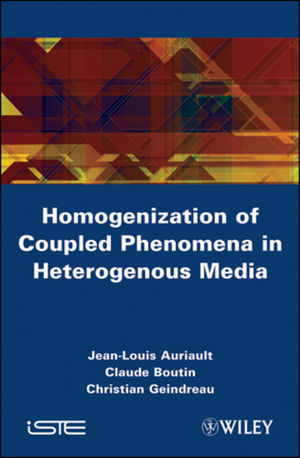Homogenization of Coupled Phenomena in Heterogenous MediaISBN: 978-1-84821-161-2
Hardcover
476 pages
August 2009, Wiley-ISTE
 |
||||||
Both naturally-occurring and man-made materials are often
heterogeneous materials formed of various constituents with
different properties and behaviours. Studies are usually carried
out on volumes of materials that contain a large number of
heterogeneities. Describing these media by using appropriate
mathematical models to describe each constituent turns out to be an
intractable problem. Instead they are generally investigated by
using an equivalent macroscopic description - relative to the
microscopic heterogeneity scale - which describes the overall
behaviour of the media.
Fundamental questions then arise: Is such an equivalent macroscopic description possible? What is the domain of validity of this macroscopic description? The homogenization technique provides complete and rigorous answers to these questions.
This book aims to summarize the homogenization technique and its contribution to engineering sciences. Researchers, graduate students and engineers will find here a unified and concise presentation.
The book is divided into four parts whose main topics are
- Introduction to the homogenization technique for periodic or random media, with emphasis on the physics involved in the mathematical process and the applications to real materials.
- Heat and mass transfers in porous media
- Newtonian fluid flow in rigid porous media under different regimes
- Quasi-statics and dynamics of saturated deformable porous media
Each part is illustrated by numerical or analytical applications as well as comparison with the self-consistent approach.



